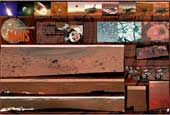
 |
|
|
Over the years, William's interest in astronomy developed into an increasingly time-consuming obsession and he recruited Caroline and their brother Alexander to help him build telescopes and record observations. Lemonick writes that William was an all-round astronomical genius. He not only made meticulous observations through telescopes that he had built himself, including some of the most powerful of his day, but he also theorised extensively, writing many papers on a wide variety of subjects. Caroline, too, was a remarkable astronomer. At first her brother's unpaid assistant, she later went on to discover eight new comets and a number of nebulae on her own. So notable were her achievements that King George III granted her an annual pension of £50, at a time when it was unheard of for a woman to earn her own salary as an astronomer. On 13 March 1781 William discovered the planet Uranus, which he named the Georgian Star in honour of the King. This discovery brought him fame and a pension of ?200 a year, but Herschel himself considered it much less important than his search for double stars and nebulae. Later in life he also discovered infrared radiation but, to Lemonick, the Herschels' most important contribution to astronomy was the technique they developed of surveying the entire sky, cataloguing objects of various types and then using those catalogues to understand the structure and evolution of the Universe. This technique, Lemonick argues, is perhaps the single most important tool of modern astronomy. Elizabeth Sourbut
|
|
|
|
2009 Yearbook This 132-page special edition features the ultimate observing guide for 2009, a review of all the biggest news stories of 2008, in depth articles covering all aspects of astronomy and space missions for 2009, previews of International Year of Astronomy events and much, much more. This 132-page special edition features the ultimate observing guide for 2009, a review of all the biggest news stories of 2008, in depth articles covering all aspects of astronomy and space missions for 2009, previews of International Year of Astronomy events and much, much more.Infinity Rising  This special publication features the photography of British astro-imager Nik Szymanek and covers a range of photographic methods from basic to advanced. Beautiful pictures of the night sky can be obtained with a simple camera and tripod before tackling more difficult projects, such as guided astrophotography through the telescope and CCD imaging. This special publication features the photography of British astro-imager Nik Szymanek and covers a range of photographic methods from basic to advanced. Beautiful pictures of the night sky can be obtained with a simple camera and tripod before tackling more difficult projects, such as guided astrophotography through the telescope and CCD imaging.Exploring Mars  Astronomy Now is pleased to announce the publication of Exploring Mars. The very best images of Mars taken by orbiting spacecraft and NASA's Spirit and Opportunity rovers fill up the 98 glossy pages of this special edition! Astronomy Now is pleased to announce the publication of Exploring Mars. The very best images of Mars taken by orbiting spacecraft and NASA's Spirit and Opportunity rovers fill up the 98 glossy pages of this special edition!Mars rover poster  This new poster features some of the best pictures from NASA's amazing Mars Exploration Rovers Spirit and Opportunity. This new poster features some of the best pictures from NASA's amazing Mars Exploration Rovers Spirit and Opportunity. |
||||||||||||||||||||||||||||||||||||||||||||